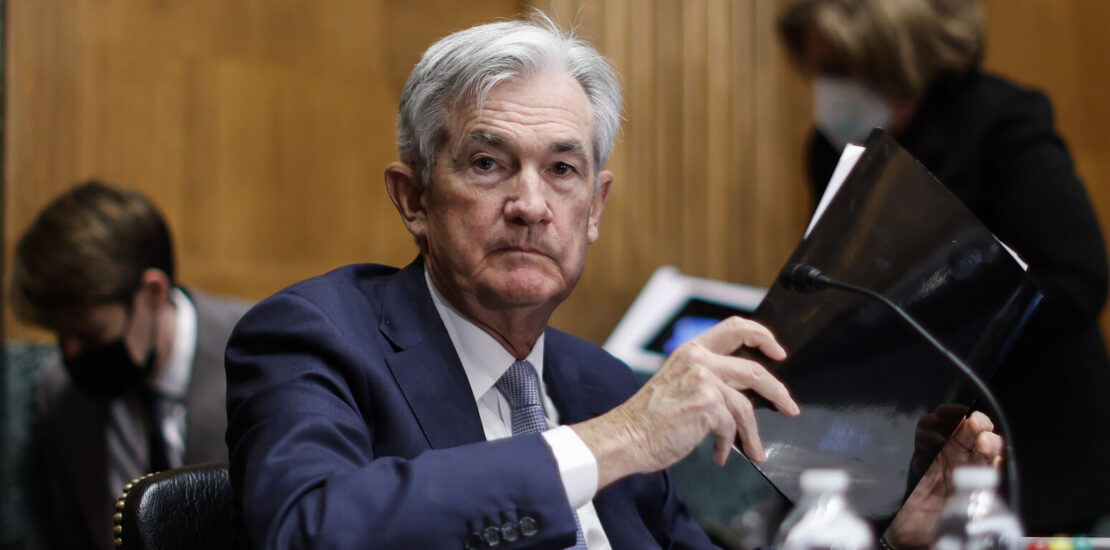- 13/06/2022
- Posted by: abbas
- Category: Uncategorized

The Federal Reserve is widely expected to raise interest rates by a half of a percentage point for the second consecutive time at the end of its next meeting on June 15. After that, all bets are off. Bigger rate hikes could be in the cards as consumer prices surge.
More rate hikes are likely in the coming months because Jerome Powell and the rest of the Fed can’t declare victory against rampant inflation anytime soon, especially since consumer prices rose 8.6% year-over-year through May.
In fact, the chances of a three-quarters of a percentage point hike on Wednesday, while still somewhat remote, shot up following the May CPI report.
“The Fed needs to show resolve.
It can’t afford to appear that it doesn’t have conviction about getting their arms around this stubborn and persistent inflation. The next two meetings have to be half-point hikes,” said Todd Lowenstein, chief equity strategist of The Private Bank at Union Bank.
But Lowenstein acknowledged there is a growing debate as to whether the Fed should slow down the pace of rate hikes, or even pause for a meeting, later this year to assess the impact of higher rates on the broader economy.
There is a lag between when higher rates are announced and when they actually slow consumer spending.
To be sure, a pause seems less likely after the hot inflation report for May. In fact, traders are now pricing in a more than 40% chance of a three-quarter-point hike at the Fed’s July meeting.
Economists at Barclays wrote Friday that it “is a close call” as to whether the Fed hikes rates that much in June or July.
Still, not everyone thinks the Fed has to be that aggressive. The Fed has begun a process called quantitative tightening, which could slow consumer demand by pushing long-term interest rates higher.
Here’s how that works:
As part of the Fed’s 2020 Covid stimulus efforts, the central bank bought massive amounts of bonds and mortgage-backed securities. This so-called quantitative easing has pushed the Fed’s balance sheet to an unwieldy size of nearly $9 trillion.
Now, the Fed is unwinding some of these assets by letting bonds on its balance sheet mature and not reinvesting principal payments back into those bonds. This should, in theory, push long-term yields higher.
That could be another reason why fears of multiple big rate hikes from the Fed could be overdone.
“Quantitative tightening is definitely going to push long-term rates higher and I don’t think the market is factoring that in. Investors are probably expecting an overly hawkish Fed,” said Sandy Villere III, a portfolio manager with St. Denis J. Villere & Co. “The market overreacted and that is giving us opportunities to buy some things.”
Villere said that bonds and some small-cap US companies are looking attractive.
But he conceded that investors have to tread cautiously. There is no guarantee that the Fed can slow the economy without causing a recession.
“We’ll see if the Fed can pull off this magic trick and have a soft landing instead of a crash landing. There is no doubt that the Fed waited too long to react to inflation,” Villere said.
Others worry that big rate hikes from the Fed aren’t going to help bring down inflation, especially since a big chunk of higher prices are due to surging energy costs. And unless the Fed can somehow broker a peace deal between Russia and Ukraine, good luck seeing any relief at the pump anytime soon.
“We had hoped that we had reached peak inflation,” said Jay Woods, chief market strategist at DriveWealth. “But the Fed doesn’t control the price of oil and gas. Consumer spending habits are going to change drastically.”
Up next
Monday: Earnings from Oracle
Tuesday: US producer prices
Wednesday: US retail sales; Federal Reserve policy announcement
Thursday: US housing starts and building permits; US weekly jobless claims; earnings from Kroger (KR), Jabil (JBL) and Adobe
Friday: US industrial production
CNN